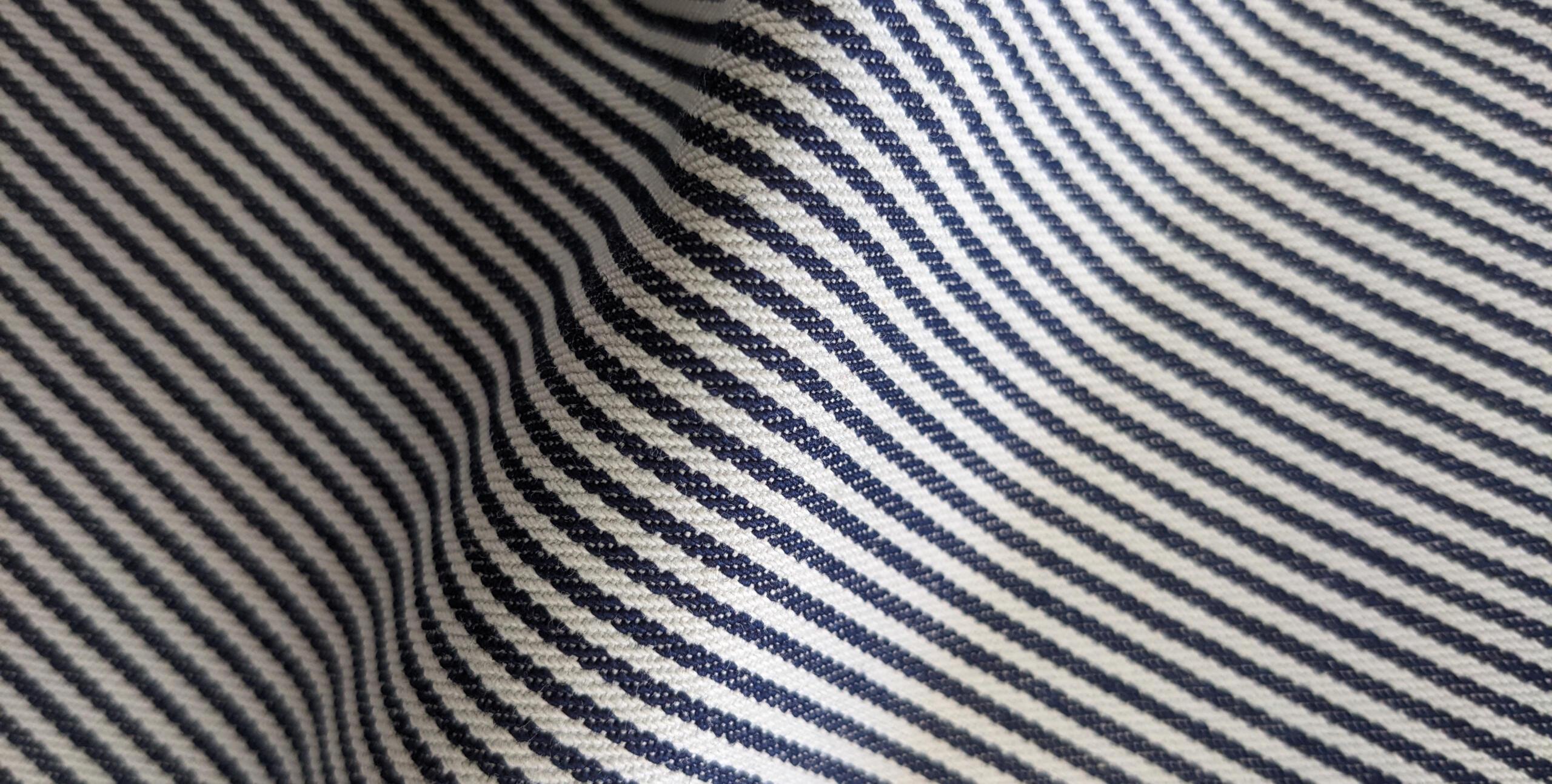A symbol of American industrial history, a railroader's icon and famous for its aesthetics as much as its functionality, theHickory Stripe takes its name from hickory wood, as it recalls its appearance, but also shares its virtues of solidity and resistance.
TheHickory Stripe was introduced to the USA in the 19th century, and made its legend by being worn by railroad workers. It quickly became associated with the American dream and hard, manual labor. It entered the collective imagination through popular culture, in films and TV series, helping to establish the Hickory Stripe as the emblematic fabric of the working man.
The reason for its use was, of course, its robustness, but also the fact that its pattern masked grease and coal stains. Add to this the comfort of the garment, and Hickory Stripe was the perfect choice for a functional, durable garment.
Although popularized by railway workers, the Hickory was also widely worn by farm and factory workers and mechanics. After the Second World War, Hickory Stripe lost popularity as industries and fashions changed, but later, in the 1980s, the appeal of vintage revived the story of this iconic fabric. Today, it is widely used in sustainable fashion for its strength and powerful symbolism.

Hickory stripe is generally made from cotton, necessarily of high quality, which is spun and then dyed to obtain colored threads, often blue, and undyed threads. It is this combination of yarns, woven in a twill, i.e. at an angle, that gives hickory its distinctive striped appearance.
For its 2024 collection, Kidur has chosen to turn to Chapman, the historic Manchester weaver carrying on the family tradition since 1869. The weaving company is still owned by the Chapman family, and continues to produce high-quality fabrics based on cotton, their specialty.
Kidur used hickory stripe for two pieces in its 2024 summer collection: the Ernest Draisine shorts and the 41 Draisine jacket. Both stem from the desire to create a durable, supple and lightweight garment suited to a Kidur summer wardrobe made in France.
To preserve stripes, it's best to wash your garments inside out and at low to medium temperatures. Air-drying is also preferable to machine washing. If machine drying is necessary, it should be done at low temperature.
Be the first to know about our events,
new launches and much more...
PAYMENT
SECURE
All your transactions are 100% secure

CUSTOMER SERVICE
The Kidur team is at your service from Monday to Friday from 8H30 to 12H00 from 1.30 p.m. to 5.30 p.m. at 0549720130THE COLLECTION
PRACTICAL INFORMATION
The Kidur team is at your service from Monday to Friday from 8H30 to 12H00 and from 13H30 to 17H30
La Plainelière de Courlay
51, rue du Bocage
79440 Courlay - France
Orders for Kidur products are processed, prepared and dispatched from the Manufacture. We entrust the delivery of your orders to the Colissimo and Chronopost services.
For orders of Kidur products in stock. Delivery time is 2 to 3 working days in metropolitan France after the day the products are dispatched by our services.
Metropolitan France and overseas territories: Free delivery on orders over €150. Otherwise, you'll be asked to pay €5. You can also pick up your order directly at the factory and discover our workshop.
Europe: Free delivery on orders over €175. Otherwise, you will be asked to pay 15€.
Other countries: Free delivery on orders over 200€. Otherwise, you will be asked to pay €25.
Take a behind-the-scenes look at the Manufacture by following our newsletter and get 5% off your first order.